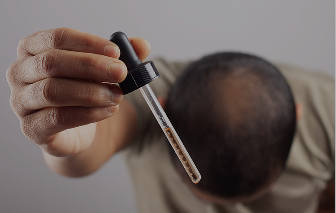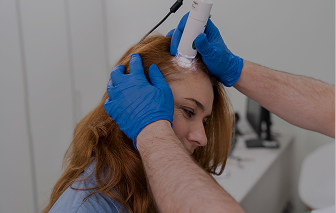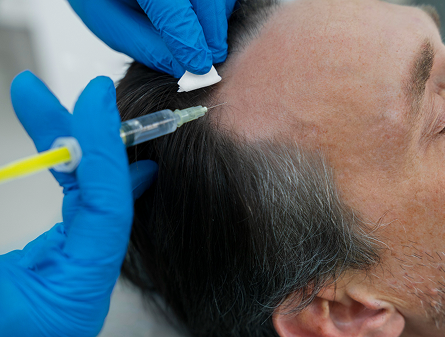Minoxidil is a hair loss treatment that acts as a vasodilator. It makes the hair follicles larger by increasing the blood circulation to the scalp and dilating the blood vessels. Low-level laser therapy (LLLT) exposes the skin tissue to wavelengths of light in the “near-infrared” and red side of the visible light spectrum.
This stimulates the stem cells which cause hair to grow. Minoxidil is a chemical treatment that can be taken orally or applied topically. LLLT is a non-invasive treatment that is performed using a device either in a clinic or at home. Explore the comparison table below to see if minoxidil or LLLT is right for you.
- Minoxidil is an over-the-counter topical drug available in Australia.
- It must be applied daily to be effective and works by stimulating the growth of follicles through vasodilation.
- Minoxidil is more readily available and cheaper than laser therapy, but it involves long-term usage and irritation to some users.
- Laser therapy uses low-level lasers to activate scalp circulation and rejuvenate follicle function.
- It is painless and generally safe for repeated, long-term use.
- In contrast to minoxidil, laser therapy does not require the application of a chemical to the skin, which may attract users who prefer high-tech solutions.
- Minoxidil is less expensive upfront, costing $20–$50 per month for the popular Australian brands.
- However, unlike laser therapy, this cost recurs monthly, so it may be more expensive over the years of continuous use.
- Laser therapy units cost between $300 and $1000, depending on the model, and are a one-time expense.
- Although more expensive upfront, laser treatment might be cheaper over the long term than minoxidil due to the latter’s short lifespan and disposability.
- Minoxidil must be applied once or twice daily without a break, as stopping usually leads to instant reversal of baldness.
- Unlike laser therapy, it involves more daily use that is hard to maintain.
- Laser treatments are generally done three to five times weekly and take approximately 15–30 minutes.
- Unlike minoxidil, its regimen offers flexibility, and temporary lapses in use don’t typically result in immediate regression.
- Minoxidil is applied directly to the scalp and penetrates the skin, stimulating hair growth by prolonging the follicles’ growth phase.
- It differs from laser therapy since it does not employ any topical product.
- With laser treatment, red light stimulates the scalp to boost cellular energy and improve blood supply.
- Minoxidil is not based on a pharmacological effect but uses light to help scalp function
- Minoxidil may cause some users’ scalp irritation, flaking, or excessive facial hair growth.
- It carries a slightly higher possibility of side effects, particularly for sensitive skin, than laser therapy.
- Laser therapy is safe; no long-term side effects have been reported when utilised appropriately.
- Unlike minoxidil, it avoids chemical interaction with the skin, making it preferable for individuals with dermatological concerns.
- Minoxidil is easy to apply but must be done consistently daily, which may become tedious over time.
- Compared to laser therapy, it’s more portable but requires stricter routine adherence.
- Laser therapy involves dedicated session time and a device, which can be less convenient day-to-day.
- However, unlike minoxidil, it allows for less frequent use and may suit those who prefer structured weekly treatments.
- Minoxidil is widely available in Australian pharmacies and online, requiring no prescription.
- Unlike laser therapy, it’s much easier to find and use without upfront investment.
- Laser therapy devices are available online but are less commonly found in Australian retail stores.
- Unlike minoxidil, it may be less accessible due to higher cost and limited in-person clinic availability.
- Minoxidil results can reverse quickly, often within weeks, if treatment is stopped.
- Compared to laser therapy, it offers faster regrowth but depends entirely on uninterrupted use.
- Laser therapy delivers gradual but stable progress; effects may taper slowly after stopping.
- Unlike minoxidil, it doesn’t result in rapid reversal, making it more sustainable for users needing treatment breaks.
- Minoxidil is often combined with finasteride, microneedling, or laser treatment to enhance outcomes.
- Unlike laser therapy, it absorbs topically and can interact with other scalp-applied products.
- Laser therapy supplements treatments such as minoxidil, enhances scalp receptivity and reduces inflammation.
- This is unlike minoxidil, which can be used after or prior to some treatments without altering absorption or efficacy.
- Minoxidil appeals to users looking for a reliable, medically backed solution with minimal equipment.
- Compared to laser therapy, it may feel more direct, though topical application can be messy.
- Laser therapy attracts those interested in non-invasive, tech-forward options.
- Unlike minoxidil, it delivers a hands-free, device-led experience that may feel more advanced or clinical.
- Minoxidil stimulates follicle growth and extends the hair’s growth cycle, but does not directly enhance overall scalp health.
- Unlike laser therapy, its benefits are more targeted to follicular activity than circulation or inflammation reduction.
- Laser therapy improves blood flow and reduces scalp inflammation, which may indirectly support healthier follicles.
- Compared to minoxidil, it offers broader benefits to overall scalp wellness beyond just hair regrowth.
- Minoxidil packaging creates ongoing waste through plastic bottles, applicators, and boxes.
- Compared to laser therapy, it is less sustainable due to monthly repurchases and disposables.
- Laser therapy devices are long-lasting and generate minimal waste after purchase.
- Unlike minoxidil, they have a lower environmental footprint and no need for recurring packaging.
Shop our hair solutions
We are committed to providing affordable hair regeneration services for people all over Australia. Our formula can help you regain your confidence.
Shop Now

Minoxidil vs Laser Treatment for Hair Loss Comparison Summary
Minoxidil is available over the counter at a higher price or can be prescribed by a doctor online for a lower cost. LLLT sessions and devices can be a greater long-term cost. Minoxidil is typically applied to the scalp twice a day or taken as a pill daily. LLLT is performed 2-3 times a week for 15-30 minutes per session.
Minoxidil has reported side effects amongst users including itching, tingling, and a rash at the application site. LLLT patients typically do not report side effects though itching, acne, and scalp sensitivity have been noted among some patients in studies. Minoxidil’s effectiveness is generally the same across the variety of brand names it is sold under.
LLLT at home may not be effective in more advanced stages of hair loss and could require clinical-grade equipment to see results. LLLT may be suitable if you are looking for a good alternative to medications and surgery as it is a non-invasive hair treatment. Minoxidil may be suitable if you want a non-surgical solution that can be applied from home.
User Guidance
Minoxidil can be combined with a number of treatments whether at home or as part of clinical treatment. Minoxidil is often combined with finasteride for beneficial at-home treatment while PRP sessions can help to promote hair growth and healing alongside minoxidil application.
LLLT can be combined with minoxidil or finasteride although more research is required into the most effective combination treatments for LLLT. Minoxidil may require more commitment to see results as patient reviews have noted the need for consistent application to enjoy results. LLLT can work well as part of your weekly routine as it only needs to be performed 2-3 times per week.
Take Our Hair Loss Quiz to See Which Treatment Suits You?
Take A Hair Quiz

Frequently Asked Questions
We have put some commonly asked questions.
Nunc scelerisque tincidunt elit. Vestibulum non mi ipsum. Cras pretium suscipit tellus sit amet aliquet. Vestibulum maximus lacinia massa nontor.
Platelet-rich plasma (PRP) treatment involves drawing blood from the patient, isolating the beneficial nutrients and injecting it into the scalp where hair loss is occurring. This promotes hair growth and has many other applications from encouraging healing to skin rejuvenation.
Platelet-rich plasma (PRP) treatment involves drawing blood from the patient, isolating the beneficial nutrients and injecting it into the scalp where hair loss is occurring. This promotes hair growth and has many other applications from encouraging healing to skin rejuvenation.
Platelet-rich plasma (PRP) treatment involves drawing blood from the patient, isolating the beneficial nutrients and injecting it into the scalp where hair loss is occurring. This promotes hair growth and has many other applications from encouraging healing to skin rejuvenation.







 See All
See All